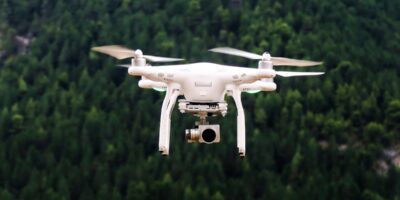Exploring Silent Falcon UAS Technologies
Silent Falcon UAS Technologies has made significant strides in the unmanned aerial systems (UAS) industry. Their focus is on providing advanced small to medium-sized UAS platforms. They cater to a variety of sectors, including security, agriculture, and environmental monitoring.

Innovation in Design and Materials
The company is known for its unique approach to drone design. Silent Falcon’s UAS feature a combination of lightweight and durable materials. They use carbon-fiber and solar power to enhance flight capabilities. This choice supports longer endurance and robust performance in diverse environments.
One key element that distinguishes Silent Falcon is their hybrid propulsion system. This system allows the drones to operate efficiently with reduced sound emission. Such technology is ideal for surveillance operations where stealth is crucial.
Solar Power Integration
Silent Falcon incorporates solar power efficiently. The drones are equipped with solar panels that extend flight time significantly. This feature is beneficial for missions requiring extended aerial coverage without ground support.
Solar technology also makes these drones environmentally friendly. They reduce reliance on traditional fuels, mitigating their carbon footprint. It’s an essential step toward sustainable aviation practices in the UAS industry.
Applications Across Industries
Silent Falcon UAS have a broad application spectrum. In agriculture, they provide precision farming solutions. Farmers can monitor crops, manage pests, and optimize resource usage effectively.
Environmental monitoring is another critical application. These drones help track wildlife, assess forest health, and measure pollution levels. They provide researchers with data that would otherwise be challenging to collect.
In the security sector, Silent Falcon provides enhanced surveillance capabilities. Their drones can patrol vast areas and provide real-time data. They are used for border security, law enforcement, and search and rescue operations.
Challenges and Developments
While Silent Falcon has made impressive advancements, challenges remain. Weather conditions can impact the efficacy of solar panels. The UAS industry is also highly regulated, requiring continual adjustment to legal standards.
Silent Falcon continues to innovate to address these challenges. Advances in battery technology and solar efficiency are ongoing. The aim is to improve reliability even in less-than-ideal weather.
Market Position and Future Prospects
Silent Falcon holds a competitive position amidst evolving UAS technologies. Their focus on sustainability and versatility appeals to varied industries. The demand for silent, efficient drones is growing, which benefits their market stance.
In terms of future prospects, Silent Falcon is poised for growth. Potential expansions include partnerships with other tech innovators. They also explore enhancements that increase operational scope and efficiency.
The Human Element
Despite the high-tech focus, Silent Falcon values the human element in their operations. They emphasize training and support for operators. This commitment ensures that users can maximize the technology’s capabilities.
Their tech is user-friendly, reducing the learning curve. This approach democratizes drone usage, making it accessible beyond just tech specialists.
Final Thoughts
Silent Falcon UAS Technologies offers a glimpse into the future of unmanned aerial systems. Their emphasis on design, innovation, and sustainability sets them apart. As industries increasingly rely on sophisticated UAS, companies like Silent Falcon are set to lead the charge.



Subscribe for Updates
Get the latest articles delivered to your inbox.
We respect your privacy. Unsubscribe anytime.